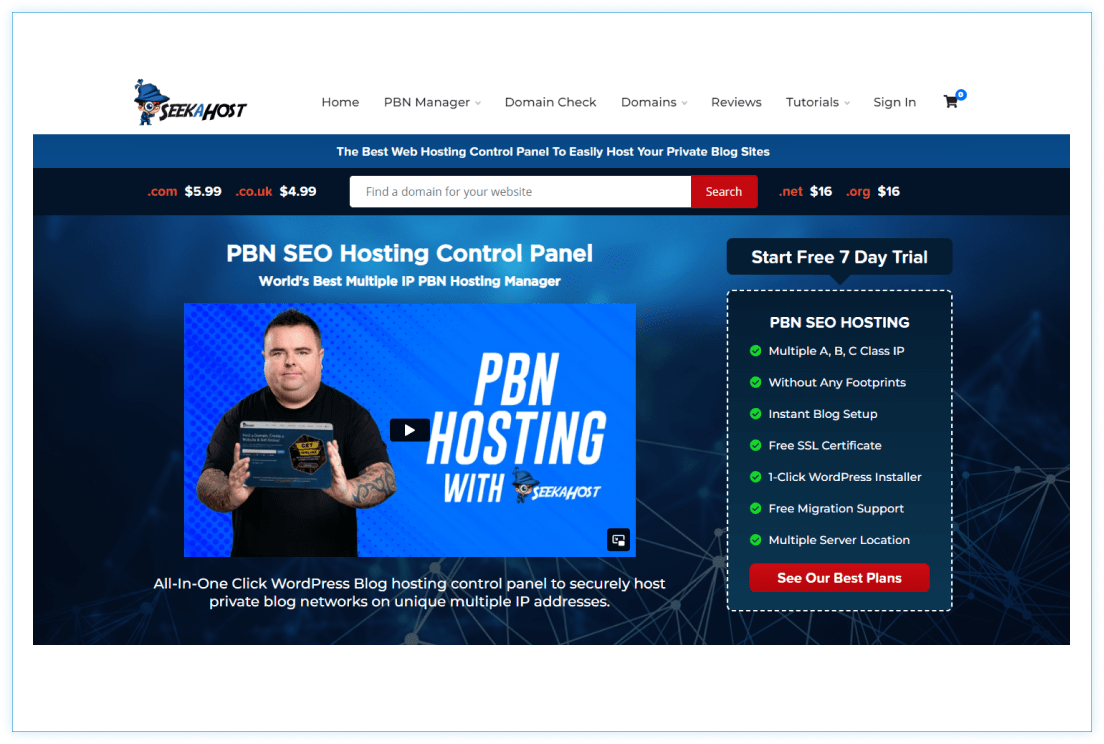
Backlinks are links on one website that lead to another website. Search engines, like Google, consider them as signals of trust and credibility. More backlinks, especially from authoritative sources, often lead to higher Google rankings.
Understanding backlinks is essential for optimizing your online presence. We at quirk.biz, as SEO experts, have many years of experience with backlinks, and in this article, we’ll share everything you need to know about them so you can build your successful SEO strategy.
What Are Backlinks in SEO?
Backlinks, also known as inbound or incoming links, are links from one website that point to another website. In the context of SEO (Search Engine Optimization), backlinks are crucial because they serve as “votes” of credibility and authority from one site to another.
Why Are Backlinks Important for SEO?
Backlinks Can Improve Your Ranking
Google’s ranking algorithm relies on backlinks to evaluate a website’s authority. Usually, pages with more high-quality backlinks tend to rank higher in search results.
Keep in mind that having lots of backlinks from low-quality websites may not help as much as a few from trusted sites that are related to your topic.
It’s not just about quantity; it’s also about the variety of websites linking to yours. When different websites link to yours, it shows you’re reliable.
In short, backlinks are a big deal in SEO, and they matter even more when well-known websites in your field link to your content.
Backlinks Assist Google in Discovering Your Content
Backlinks help Google find new content. When Google follows a backlink to a new page, it checks for all the links on that page.
To make this process smoother, it’s a good idea to use internal links within your website. When your pages link to each other, Google can follow a backlink to your site and explore more pages once it’s there.
This is important for Google to understand how your website is organized. Google goes through your site and indexes its pages, and this makes it more likely for your pages to show up in search results.
In short, backlinks not only boost your website’s visibility but also assist Google in understanding and ranking your content.
Backlinks Send Referral Traffic to Your Page
Referral traffic means the visitors who arrive at your site through links on other websites without using a search engine like Google. They were directed to your site via a “referral” source – backlinks.
The advantages of referral traffic include the following:
- Increased brand recognition
- Exposure to new audiences
- Enhanced authority through backlinks
The referral traffic can attract potential users to your site, often making them your new customers.
Types of Backlinks
Links may be coming from other internal pages on our website or external pages of other websites.
Typically, all links can be do-follow or no-follow links.
Do-follow backlinks lead search engines to follow the link and view it as a vote of confidence for the linked website.
The no-follow backlinks tell search engines to ignore the link and not see it as a sign of approval for the website it’s pointing to. They are designed to fight spam and low-quality links.
The backlinks can be:
- Based on where they are placed: Links can be placed in the main article/text body or image (in this case, the alt tag acts as an anchor text), on a single URL or a side-wide, in the header or footer area.
- Based on how we gain the links: Links can come from new articles (guest posts), link insertions (when an existing article is updated), or press releases.
- Based on how the links are implemented: Here are some of the various link types you’ll discover, depending on the way they are implemented:
<a> – generates a hyperlink by using the “a href” attribute to specify the link’s destination and the anchor text.
<img> – for alt texts on image links.
<script> – creates a crawlable JavaScript link.
<link rel=”value“> – informs search engines about the preferred URL for indexing and prevents content duplication.
To learn more about the types of backlinks, read this article.
How to Check Backlinks
There are two ways to research a website’s links: checking backlinks to your website or checking backlinks to another website.
Checking Backlinks to Your Website
These are the methods we normally use:
- Google Search Console: This free tool is suitable for basic backlink checking. Sign in, and in the sidebar, click “Links.” The number under “External links” displays the total count of unique backlinks to your website. Please note that Google Search Console has limitations, showing only the top 1,000 links and lacking some advanced SEO metrics.
- Ahrefs Webmaster Tools: To access more comprehensive data for free, you can utilize Ahrefs Webmaster Tools. After setting up a project, navigate to the dashboard and click on “Backlinks.” This will lead you to the Backlinks report within the Site Explorer tool, where you can explore all your backlinks and relevant backlink data.
These steps allow you to monitor and analyze your website’s backlinks more effectively, providing valuable insights for your SEO efforts.
Checking Backlinks to Another Website
To examine backlinks to a different website or web page, follow these steps:
- Begin with a tool such as Ahrefs’ free backlink checker. Enter the domain or URL you want to investigate, and click “Check backlinks.”
- You will receive an overview of the total backlinks, referring domains (links from unique websites), and the top 100 backlinks to the specified domain or URL.
- If you need to access a complete list of backlinks to a specific page or website, consider using Ahrefs’ Site Explorer tool. This tool provides a more detailed and extensive backlink analysis.
Using these steps, you can efficiently evaluate the backlink profile of any website or webpage, gaining valuable insights into its link-building strategies and SEO performance.
Analyzing Backlink Success in SEO
As an SEO expert, evaluating the usefulness of your backlink-building efforts is vital. The ultimate goal is to improve your website’s rankings for specific keywords in search results, which, ideally, should result in more organic traffic and increased conversions.
However, it’s important to note that the relationship between the number of backlinks and the resulting organic traffic is not always straightforward. Sometimes, having numerous backlinks might not significantly boost traffic, while a single high-quality backlink can make a noticeable difference. Additionally, changes in search engine rankings can take time, sometimes weeks or even longer.
To completely evaluate backlink success, we as an SEO experts rely on two categories of metrics: “lagging metrics” and “leading metrics.”
Lagging Metrics:
- Search Engine Rankings: Monitor how your website ranks for your target keywords over time. Understand that ranking changes may not be immediate.
- Organic Traffic: Analyze the overall organic traffic to your site, and look for trends that might be influenced by your backlink efforts.
Leading Metrics:
- Total/New Backlinks: Keep track of the number of incoming backlinks to your site. You can use tools like Google Search Console for basic tracking or more strong paid tools like Ahrefs.
- Domain Authority (Domain Rating): While search engines don’t provide a direct score for your backlink profile, third-party tools like Semrush and Ahrefs assign scores from 1 to 100. These scores consider various factors, including organic and backlink-driven traffic, to measure your website’s trustworthiness and credibility.
What Makes a Good Backlink?
Backlinks are not created equal, and their quality and impact on your website’s SEO can vary significantly.
Here are some factors you should consider:
Authority
Authority is a critical aspect when evaluating the quality of a backlink. Backlinks from authoritative web pages typically convey more “authority” to your site, positively impacting your SEO.
Anchor text
Anchor text is the visible, clickable text within a hyperlink that your website’s audience reads. Links with anchor text containing your target keywords can be significant for your website’s growth.
However, be careful when using keyword-rich anchor text. Overdoing it can trigger action from Google’s filter known as Google Penguin, which is designed to detect and penalize websites using black hat link-building strategies.
To maintain a healthy and natural backlink profile, we advise you to diversify your anchor text and use it naturally within the content.
Relevance
Relevance is also an essential factor for backlink quality. Backlinks from websites that share the same topic or niche as your site tend to be more valuable. Google’s “How Search Works” guide highlights the importance of this, stating that when prominent websites within a subject link to a page, it signifies high-quality information.
Placement
The location of a link on a web page is also important.
Links in the main content area that stand out are more powerful than links in less noticeable places, like the footer.
Good placement, design, and engaging text make links more effective in building a website’s authority.
Destination
It is also important to consider the destination of your backlinks. Google ranks individual pages rather than entire websites. Therefore, it’s advisable to build links that point directly to the specific page you want to rank.
However, acquiring backlinks for certain page types can be challenging. For instance, commercial pages often struggle to attract links because people tend to link to informative and engaging content.
To overcome this challenge, you can use internal linking strategies. This involves using links from pages that naturally attract many links to direct authority toward your essential but less interesting pages. This helps boost their visibility and ranking in search results.
How to Get Backlinks
Obtaining backlinks for your website involves several strategies:
- Guest Blogging: Share your industry expertise on other blogs to expand your audience and gain backlinks.
- Broken Link Building: Many older websites have inactive pages due to changes or rebuilds. Reviving or using permanent redirects for these pages can help you regain lost backlinks.
- Content Marketing: Create high-quality, original, and valuable content. When others find your content informative, they may naturally link to it in their articles, enhancing your backlink profile.
- Add Links: Some websites allow manual link submissions. While this is a straightforward method, be cautious not to overdo it, as too many low-quality links can harm your SEO efforts. Adding your site to relevant local directories can be beneficial.
- Requesting Backlinks: Contact website owners, editors, or webmasters, and offer a clear value proposition for linking to your page.
- Earning Backlinks: Attract organic links when people discover your content through search engines, social media, or word of mouth.
Remember to prioritize backlinks from high-quality websites relevant to your niche across various pages on your site, not just the homepage.
If you want to know how to find quality backlinks, check out here: https://quirk.biz/buying-high-quality-backlinks/.
What to avoid with backlinks
To maintain a healthy backlink profile and ensure your website’s SEO, we advise you to avoid the following:
- Paid Links: Buying or selling links can have a negative impact on your website’s search rankings. Search engines evaluate your site’s value based on genuine, earned links, so buying links for SEO is not a good idea.
- Press Releases for Backlinks: Creating press releases only for the intent of gaining backlinks is not a recommended SEO strategy. This practice can be seen as spammy and may harm your SEO.
- Low-Quality or Irrelevant Directory Links: Setting up profiles in directories that lack trustworthiness or relevance to your business can be detrimental to your SEO. These links are often viewed as spam and may be disliked by website visitors.
- Low-Quality Forum Backlinks: Posting links in forums should be limited to high-quality forums and meaningful discussions. Spamming forums with links may harm your brand’s reputation.
- Domains with High Spam Score: Backlinks from domains with high spam scores are considered low-quality and spammy by search engines. Acquiring backlinks from such domains can have a negative impact on your website’s SEO. You can use tools like Ahrefs and Moz to check the spam score of a website before pursuing backlinks from it.
Should You Place Outgoing Links to Other Websites?
Yes, you should place outgoing links to other websites.
Outgoing links can help improve your website’s SEO by providing context and relevance to your content.
It’s a good practice to mention where you got your information and demonstrate that your facts are accurate. If you are providing value in your content, your authority will increase. One way to do this is to deliver valuable resources to your customers.
It’s important to follow best practices when using outbound links to ensure that they are relevant, reputable, and add value to your content.
Conclusion
Backlinks are a vital aspect of SEO. To succeed, prioritize quality and relevance in your backlink strategies while steering clear of harmful practices like paid links and low-quality sources. Building a strong backlink profile will significantly enhance your website’s authority and search engine rankings.















































































